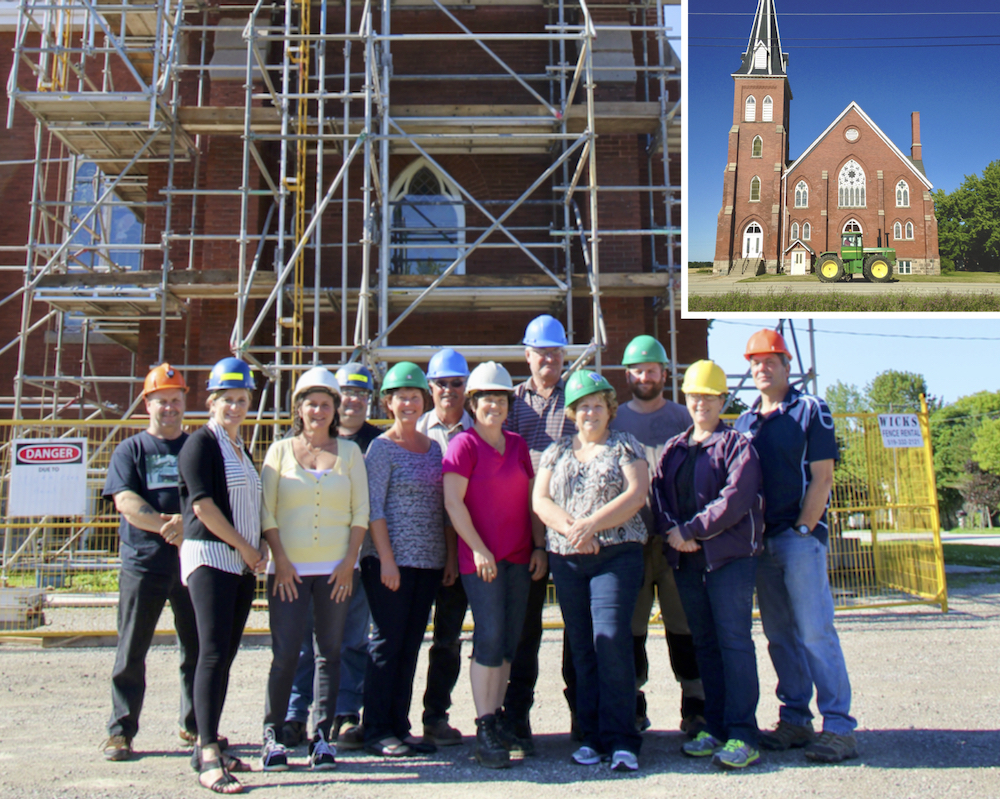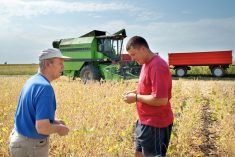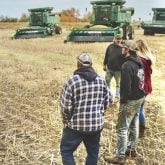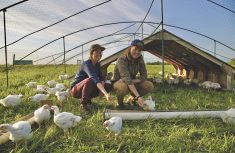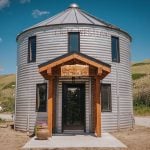It’s more than a massive loss for religious groups. With more than 5,000 churches expected to close in Canada in the coming decade, it’s a huge loss of infrastructure for the community-at-large.
Located in the centres of their communities, churches frequently provide a home for daycares, seniors programming and educational workshops, as well as for community groups and the performing arts. Most have spaces for both large and small gatherings, many have kitchens, and often there is outdoor space too, allowing people to gather together in all sorts of meaningful ways.
That’s why Kendra Fry gets called in. She’s a Stratford, Ont. consultant who refers to herself as a “church repurposer.” When a church is no longer fully in use or as active as it could be, Fry helps congregations develop a new vision for the facility. In a way, it’s a process of re-imagining what a church’s new calling may be.
Read Also

Employment Agreements Can Help Protect Your Farm
Entering into employment agreements with each of your farm employees should be at the top of every farm’s “to do” list, but caution must be exercised.
“How do we take those embedded values of community and connection and fellowship and collective action and care, and reapply them in different ways that still speak to community engagement in that space?” Fry asks.
Fry has witnessed first-hand how churches can thrive by expanding their mission to include the larger community. For several years she was the manager of Trinity-St. Paul’s Centre for Faith, Justice and the Arts located in the heart of Toronto. The building was home to two faith communities, a daycare, school and recital hall while also providing meeting space for hundreds of community groups.
Having multiple groups using the space was better for everyone and “created a better sense of connection and community,” says Fry. “The more people we bring in, the stronger we are. The more we see each other, the more we come to agreement together.”
You can see why Fry also goes by the title “Curator of Community.”
For Country Guide, Fry shared a few examples of churches in both urban and rural settings that have expanded their missions beyond their congregations or have been repurposed to new community uses.
St. Paul’s Anglican Church in Stratford, Ont., has teamed up with United Way Perth-Huron to offer a warm place out of the cold, as well as other supports for the homeless.
The Raw Carrot is a social franchise that hires people who are on government disability programs to cook and package handcrafted gourmet soup that is sold in farmers markets and retail locations in the local community. sales fund the salaries of those working at the Raw Carrot which is based at the Presbyterian Church in Paris, Ont.
In Chapleau, Ont., St. John’s Anglican Church is used by the congregation for services but is also a community hub that supports entrepreneurs, hosts a restaurant, and offers fitness programs, children and youth programming plus weekly movie nights.
The challenges
There are challenges, though, and the toughest may be financial.
It is essential to set the right fee structure, Fry says. Charges need to be low enough to be affordable for community groups but still cover the cost of building maintenance and repairs.
Although in the 1950s and 1960s, when attendance was at its peak, churches could afford to let others use their space at no cost; this is no longer a viable option.
This is particularly challenging in rural areas, says Fry. In urban areas where the demand for community space exceeds availability, rents can cover building costs and even the cost of hiring staff to manage the space.
However, in rural areas with shrinking populations and a smaller tax base, community groups must rely on volunteers at a time when the level of volunteerism is also on the decline.
Success in Kingsbridge
Today, Kingsbridge Centre is an award-winning public multi-use facility located in a former Catholic Church 10 minutes north of Goderich, Ont. Events range from educational workshops to ecumenical services, plays, art exhibits, and musical performances with both local talent and big names.
Getting here took years of hard work. In 2012, the congregation of St. Joseph’s Kingsbridge received just five weeks’ notice that the church was closing. But even though Kingsbridge is a tiny hamlet, hundreds of people came out to public meetings held to determine the fate of the church. “It was a community building even though it was a church,” explains local dairy farmer Jennifer Miltenburg who was one of about a dozen people who formed a steering committee.
The result was a consensus that they had to try to preserve the building for the community, says Miltenburg. “It was a leap of faith.”
They quickly formed a registered charity, St. Joseph’s Kingsbridge Community, with the goal of creating a multi-use facility.
Hundreds of thousands of dollars would be required to renovate the 1905 building and bring it up to code. There were no grants available at the time but with enough donations pledged to cover these costs, the steering committee proceeded with the purchase.
“We are a beacon of hope that it can be done, but it is extremely difficult and stressful,” cautions Miltenburg.
Navigating all the red tape involved in the purchase was a big challenge. That alone took almost three years.
Repairs were done in stages with a lot of volunteer labour. The basement had to be gutted and the kitchen renovated. An elevator was installed. “We continue to renovate for accessibility, and there remain window repairs and replacements, plaster work, cement work, septic … the list goes on and on. But we are very pleased with the progress to date.”
To what does Miltenburg attribute their success? The steering committee met every two weeks for years and, fortunately, they are a committee that works well together, she says. Some committee members are big-picture thinkers while others focus on details. They all have different risk tolerances. But, first and foremost, she says they are a group of friends and there was always time for a social after meetings.
Kingsbridge is also blessed with many diverse and talented volunteers, continues Miltenburg. More than 600 people volunteered thousands of hours to help with renovations and to organize events and fundraisers.
“Everyone has something they like to do,” says Miltenburg. “They are delighted to help but want to be asked first.”
When somebody wants to organize an event, the steering committee gives them direction and then lets them run with it, continues Miltenburg. “We trust that other people will do the job well.”
They have written policies for everything, and everything is tracked on the computer which makes it easier to manage the facility.
“When people enter the building and they see their neighbours, they are so happy to see them,” Miltenburg says. “The work can be overwhelming but it is worth it in the end.”
What next?
For congregations struggling to remain afloat or interested in exploring a broader community mission, consultant Kendra Fry offers the following advice:
- Consider who is using the church building now.
- Ask your church community what they want.
- Ask the non-church community what your role should be. Are you, as a congregation, willing to be a part of that?
- Know your bylaws or other limitations that affect what you are able to do.
- Is there energy around your building and is it positive? Some buildings are not meant to be saved. Let them go and move on.
If your congregation lacks the will or skills to take on the transformation itself, Fry recommends reaching out to Trinity Centres Foundation, a Canadian charitable organization with the goal of repurposing underutilized churches into dynamic spaces accessible for multiple uses.
Principal consultant Dave Harder says the organization “comes alongside congregations” to listen to their dreams and desires and to those of the neighbourhood to create a strategic plan for a community hub of engagement.
Harder’s advice to congregations is “Start now. The road to innovation and re-imagining can’t happen when you’re in crisis. Often we try to hang on to the old way of doing things for too long instead of thinking of what’s new and next.”
Resources
- Regeneration Works: Places of Faith is a partnership between the charitable organizations Faith and the Common Good and The National Trust for Canada that provides expertise to congregations struggling with declining attendance.
- Trinity Centres Foundation is a charitable organization with the goal of repurposing underutilized churches.
- Creative Collisions consultant Kendra Fry collaborates with faith communities, municipal governments, and the arts and social service sectors to reinvigorate churches.
- Kingsbridge Centre is a multi-use community facility located in a former Catholic church in rural Ontario.


